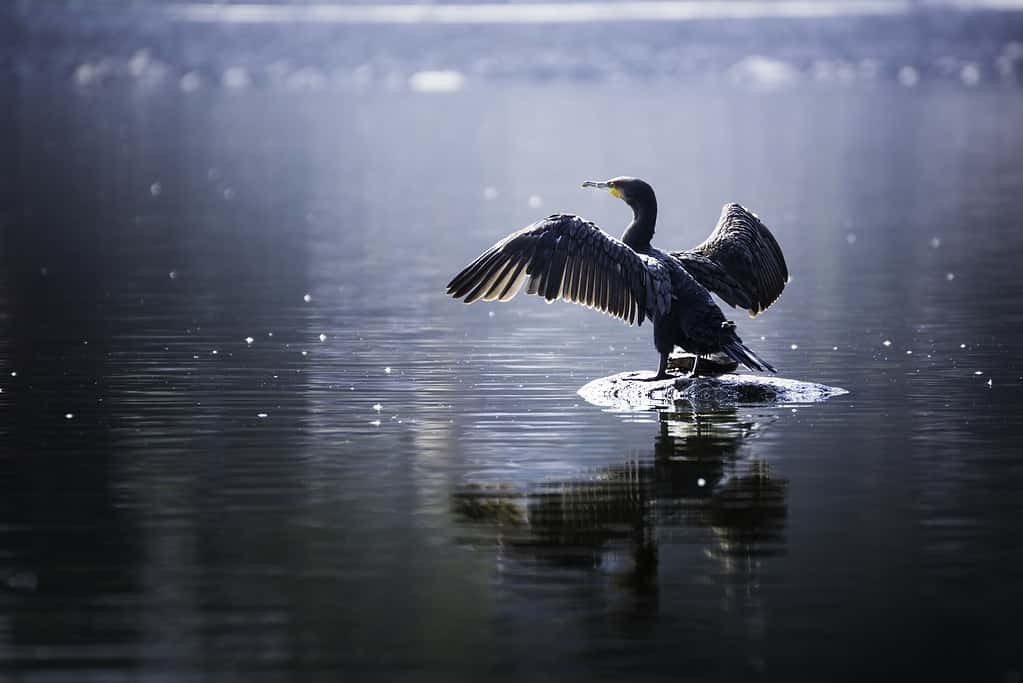Continue reading for our analysis...

We’ve all had that feeling when tucked into a huge meal only to feel sick afterward! In this clip, we see a great cormorant doing precisely that. At first, the bird can’t believe its luck as it finds a bucket full of fish. The first and second go down in a matter of seconds. The third takes a little longer. The fourth, fifth, sixth, and seventh look tempting, but the cormorant is feeling a bit full by now! It stands over the fish if it is trying to decide how to guard them for later.
Where Do Great Cormorants Normally Live?
Great cormorants (Phalacrocorax carbo) are among the most widespread cormorant species. They are found throughout Europe, Africa, Asia, and Australia. They are also found along the northeastern coast of North America. The good news is that their populations in the western Atlantic and Europe are increasing.
Regarding habitat, these birds like to live near shallow aquatic environments. They are frequently sighted around the coasts of oceans and near large lakes and rivers. In North America, they are most often seen on marine coastlines. However, they are commonly found inland near bodies of freshwater and coastal estuaries in Europe.
What Do Great Cormorants Normally Eat?

Great cormorants will dive under the water to catch fish.
©Kumud Parajuli/iStock via Getty Images
It’s clear from this clip that great cormorants are enormous fans of fish! Most of them survive on an almost exclusively fish diet. They can’t eat colossal fish and prefer their food to be less than eight inches long. Occasionally, they can be seen eating fish up to 30 inches long and weighing over three pounds – but this is a challenge! Some cormorants also eat the occasional crustacean. They are not that fussy about fish species but often rely on bottom-dwelling species that are abundant locally.
The bird in this clip was pinching fish from the bucket. Most of the time, however, cormorants catch fish from shallow water. They can also dive into the water and pursue the fish to significant depths. If they catch small fish under the water, they will eat them immediately. With larger fish, they bring them back to the surface before consuming them.
These are clever birds. They have learned that following fishing boats allows them to gobble up the discarded catches and bait. It’s also clear from this clip that they are not frightened of domestic cats!
Thank you for reading! Have some feedback for us? Contact the AZ Animals editorial team.







